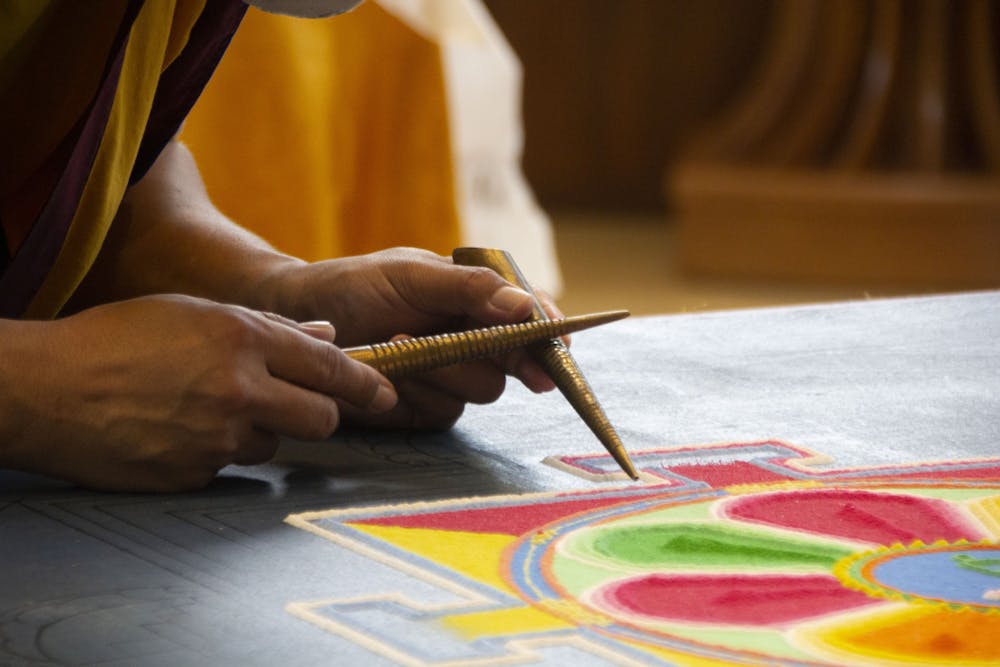Buddhist monk Geshe Sangpo made his return to Elon University for the seventh year to create a mandala for the community. Last year, Sangpo was unable to visit campus due to the pandemic.
The making of a sand mandala comes from an ancient Tibetan Buddhist art tradition. The Sanskrit word “mandala” means “world in harmony.” The sand art is constructed to generate compassion and to heal the environment. In Tibetan, the mandala is an imaginary place that is contemplated during meditation and each aspect of it has significance.
“When people come here to view and experience the creation of this mandala, which represents the calling together of all the positive, peaceful energy, they are each bringing a little piece of that energy with them, and they all leave with the collective energy they’ve generated,” said Elise Strevel, Kadampa Center Outreach coordinator.
Junior Morgan Chisholm, an intern for the Truitt Center for Religious and Spiritual life, was responsible for planning the mandala event along with junior Benjamin Waggener.
“Last year the sand mandala did not happen so we are very excited to be able to do it this year,” Chisholm said.
Before Sangpo started the mandala, there was an opening ceremony in which chants were recited to consecrate the sacred space. Following the opening ceremony, he drew geometric measurements on the table and then proceeded to apply the colored sand to the mandala. The sand is applied very meticulously through funnels called a “chakpur” and a metal rod.
Community members are encouraged to visit and see the progress throughout the next few days.
Sangpo will be working on the mandala continuously until the closing ceremony this Friday at 3 p.m. At this ceremony the mandala will be deconstructed and the sand will be shared with the earth and local community. This process represents the importance of “reducing attachment.”
“It's a beautiful practice and the people are so willing to talk to you,” Chisolm said. “To not come would be a disservice to no one but yourself.”


